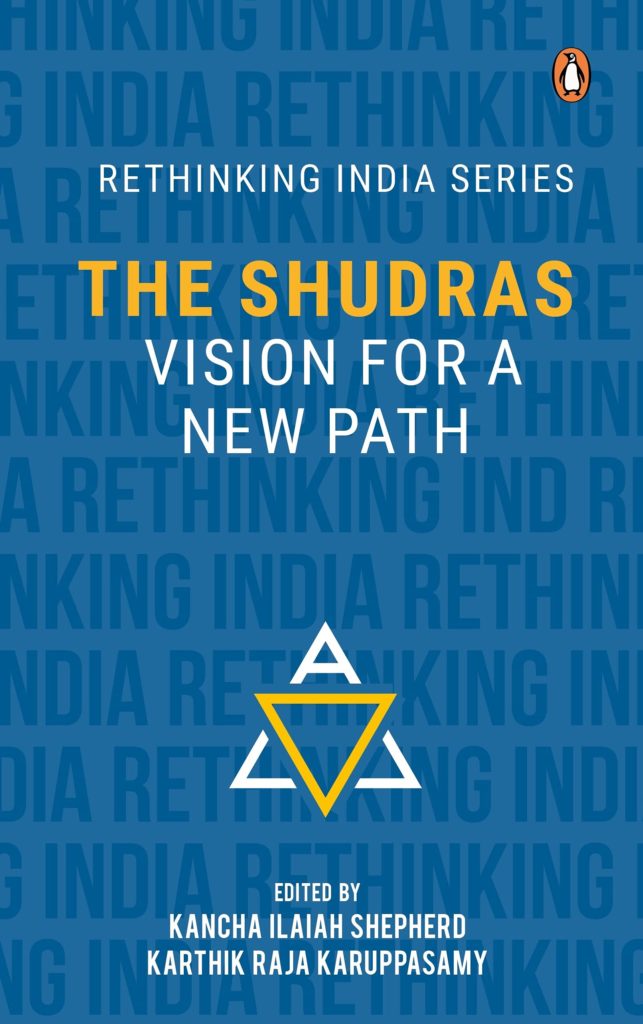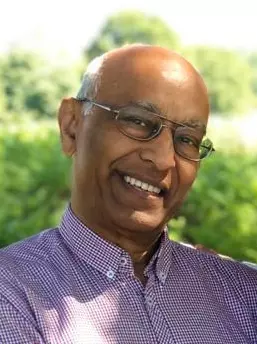India’s farmers have sustained the largest protests in modern Indian history since Mahatma Gandhi and the independence movement. While Gandhi’s khadi dhoti appeared in media worldwide, the farmers received relatively scant attention until cultural stars like Rihanna and Greta Thunberg tweeted and Disha Ravi, the granddaughter of a farmer, was arrested. Isabel Wilkerson’s book Caste: The Origins of Our Discontents took the world by storm, but it failed to turn international attention toward the country that invented the caste system, India.
Amazon’s newest bestseller, the recently released The Shudras: Vision for a New Path, edited by Kancha Ilaiah Shepherd and Karthik Raja Karuppusamy, promises to accomplish what Wilkerson’s book failed to do. Christophe Jaffrelot, a European expert on caste, says, in a quote on the book cover. ‘The Shudras echoes Dr Ambedkar’s question Who Were the Shudras? that he asked in 1946.’
Shepherd and Karuppusamy do more than echo the question; they answer it. Shudras are the farmers who are currently building tents to prepare themselves to protest through the tortuous Delhi summer heat after suffering through the water cannons and bitter cold of winter. They are the productive castes whose labour has prospered the nation while leaving themselves with one foot in the cremation grounds.
Shudra in Sanskrit means slave, and shudras are the largest body of enslaved people in the world today, comprising 52% of India, over 700 million people. Yet, just as they sit in protest today, they have always resisted their enslavement and can boast of a proud history of egalitarian aspirations. There have been books (although not enough) describing the discrimination against shudras, and their slavery, in India’s past. There have been even fewer works depicting the glorious contributions of shudras to Indian civilization.
This book weaves together the humiliations suffered by shudras, ancient and modern, with the struggles they have undergone for emancipation and forms a vision for their path forward. The call is as necessary as it is bold: to promote an egalitarian India in opposition to the Hindutva of the RSS, to incorporate a spiritual-religious foundation for liberation within the political, social, and economic spheres, and to recognize and promote shudra culture over and against upper-caste historical hegemony.
Academics have neglected scholarship about shudras. Shepherd and Karuppusamy ably fill the dearth. Discussions of human rights, discrimination, and atrocities always focus on the Dalits when spotlighting India. The Dalits, who are 18% of India, sit outside India’s caste system, the most dehumanised of all, and receive some aid and relief efforts by Indian and international agencies. Poor shudras, at the bottom of the caste system, exist above the Dalits, yet are neglected and unknown outside. The twice-born upper castes (dwija), who are 7% of India, and to which Gandhi, Nehru, and Mohan Bhagwat of the RSS belong, get everything.
In a veritable no-man’s-land, shudras are not eligible to receive any aid, nor the benefits of English education, capitalist wealth, religious rights, and political power at the national level. As an example of this from the chapter “Caste and Political Economy”, more 90% of industrial and business capital is in the dwija castes’ hands. Despite dogged determination and massive appeal, not a single leader from the shudras has emerged as a national leader. They remain in provinces speaking minor regional languages and do not feature in English media, the bureaucracy, high-end business, or industrial wealth.
With no national or international allies, shudras are forced to forge their own path forward; a path laid out in the book The Shudras. They argue that they have always had a spiritual-religious system that existed in opposition to Brahminical Hinduism by focusing on artisanal and agricultural production. Their gods and goddesses protect life and labour. Shepherd and Karuppusamy assert the need for all religions in India to link a relationship between God and production, a relationship the Shudra religious system has but is absent in Hinduism, Indian Islam, and Indian Christianity.
The international audience, blinded by racism, seeks to project their own faults and shortcomings onto India’s caste system and communicate their findings to themselves in their own language. Thus, they create race-based conclusions from caste data without establishing proper connectivity. Wilkerson, in her book, claims that caste originated in Germany, but Indian Brahminism birthed it in 1500 BCE with the writing of the Rigveda. There is no such textual evidence in Germany. The international audience has not lived in a religion like Hinduism and does not understand the spiritual-religious structures that create the caste system and sculpt a hierarchy different from race. Comparing caste and race is valid but insufficient. Shudras subsist below the Dwija castes but above the Dalits because “Hindu dharma (justice)” determines it from their previous lives’ sins connected with productive work like leather tanning and tilling land. Hindu scriptures unanimously relegate shudras to slavery, poverty, and illiteracy. The RSS and their Hindutva family uphold the same tradition.
If Westerners are averse to commenting on controversial matters like religion in India, then they should lend a supportive voice to shudras who take the lead; and learn from their protests and their movements for an egalitarian and inclusive India. When the Delhi government laid spikes on the road to prevent shudra farmers from entering Delhi, the farmers laid flowers on top, singing the songs of a 15th century shudra saint-poet:
For those sowing thorns in your path, you sow flowers.
You will have flowers all the way, but the other will have thorns.
Dwija Indian thought has already influenced the world, but, as shudras show today, the lower castes have creative, inspirational, peaceful, and productive contributions to share as well. Allow Shepherd and Karuppusamy to guide you to the path that shudras have chosen to halt the sinking of Indian democracy and to rebuild their country around its constitutional ethos, democratic character, secular nature, and inclusive spirit.
The Shudras: Vision For New Path edited by Kancha Ilaiah Shepherd & Karthik Raja Karuppusamy, pages 233, Rs 699, published by Penguin India, is reviewed by Grant McFarland, who works with Truthseekers International, a caste reconciliation movement started by Mahatma Phule (to whom The Shudras is dedicated). He has an M.A. in History from Alagappa University, and is pursuing a PhD from the Sam Higginbottom University of Agriculture, Technology, Science (India)
This review originally appeared at https://countercurrents.org/2021/03/a-book-of-the-farmers-by-the-farmers-and-for-the-farmers/ and is republished here by the permission of the reviewer.


